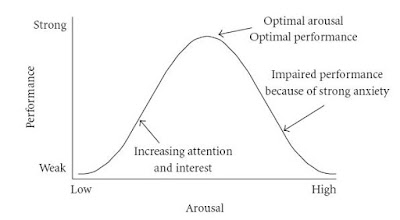A couple of weeks ago I took part in a discussion with some of my colleagues at MLI about the optimal conditions for learning in general, and for acquiring habits in particular. Yesterday, I was listening to a podcast on a different subject entirely which mentioned a study carried out more than a hundred years ago on this very question. Hearing about this study sent me back to my days as a student in cognitive psychology, and I immediately set about finding the original article.
The study was conducted in 1908 by Robert Yerkes and John Dodson, and formed the basis for the ”Yerkes-Dodson Law,” according to which the optimal conditions for habit formation are moderate physiological pressure (as opposed to high or low pressure). In Yerkes’s and Dodson’s experiment, the pressure was applied in the form of electric shocks, and the subjects were dancing mice. (I was disappointed to learn that this is a species of mouse, rather than a description of the particular talents or inclinations of the mice that participated in the study.) In education, our research subjects are people, and the pressure is stress, which can be caused by the desire to succeed, the fear of criticism, or other factors. It is worth considering how, and to what extent, the Yerkes-Dodson Law influences our learning and that of our students.
Rediscovering this classic article, and more recent research that supports the article’s central finding, reminded me how much can be learned from creative and precise studies of learning processes – even those conducted in a laboratory, far from the classroom. I was also reminded how much we, as education professionals, tend to forget or ignore these kinds of studies when we practice and talk education in our day-to-day work.
Those with limited patience for old psycho-physiological research papers can make do with reading the relevant Wikipedia entry, in particular the bell curves displayed in the margins of the page, and on page 479 of the original article.

